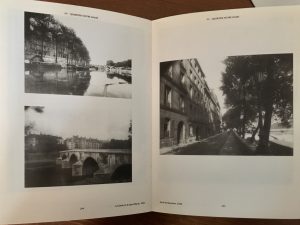A startling, comparative photographic study at The New York Times! Inspired by the solitude and deserted streets of a city under lockdown, the photographer Mauricio Lima has returned to the scenes of Eugène Atget‘s Paris of a century ago. Startling is; how ever much things change, devoid of the human factor, it is that which endures, in essence unchanged, that comes to the fore. One is invited to consider the act of habitation as a continuum, as bringing with it responsibilities – for the place in and of itself, for its history and its future, and for all the generations who have and will occupy that space.
Atget’s work is perhaps familiar to many from nostalgic postcards or illustrations, and I probably also similarly first encountered his work; one is tempted to think it a feat unto itself how Paris has been able to spin images that suggest melancholy and desolation to enhance its image as the city of lights, lovers …! Rather contrary sensual perceptions, but perhaps there-in lay the abiding allure of these photographs; they capture the essence of an urban landscape, and that in turn captivates the human heart.
Adam Nossiter, in his NYT piece, refers to Walter Benjamin’s very famous essay “The Work of Art in the Age of Mechanical Reproduction”. Here the relevant passage:
…the incomparable significance of Atget, who, around 1900, took photographs of deserted Paris streets. It has quite justly been said of him that he photographed them like scenes of crime. The scene of a crime, too, is deserted; it is photographed for the purpose of establishing evidence. With Atget, photographs become standard evidence for historical occurrences, and acquire a hidden political significance. They demand a specific kind of approach; free-floating contemplation is not appropriate to them. They stir the viewer; he feels challenged by them in a new way.
from part VI of “The Work of Art in the Age of Mechanical Reproduction”, Walter Benjamin, 1936.
In my opinion a remarkably accurate analogy, for Atget has with almost forensic rigour extricated place from its human constraints, assiduously excavating the remnants, giving them every subjective advantage, and thereby humanising them.
A few years ago, an old worn paperback came to my attention at my local library’s bazaar -costing all but nothing, I was momentarily taken aback because I knew of it’s legend status amongst aficionados of the history and art of photography, but then kindly took it off their hands!
On any one of my next flânerie, be the streets deserted as they may, I’ll look again and differently, and see how rich they are in hidden humanity – and wonder at how the eye can deceive and all that exposed by a technical apparatus in the right hands.



